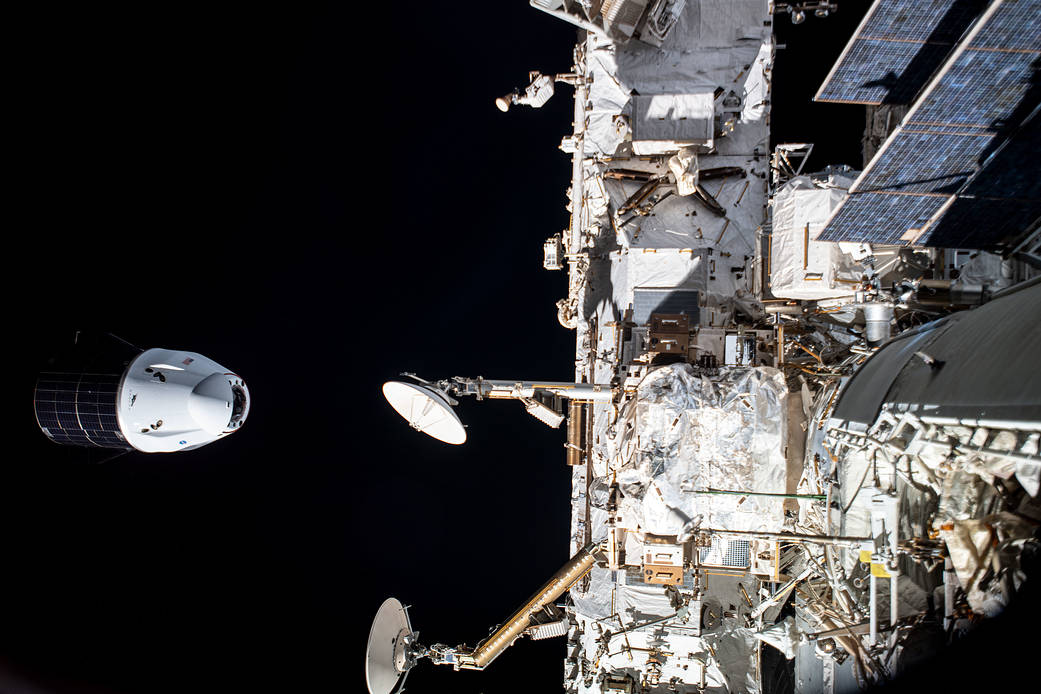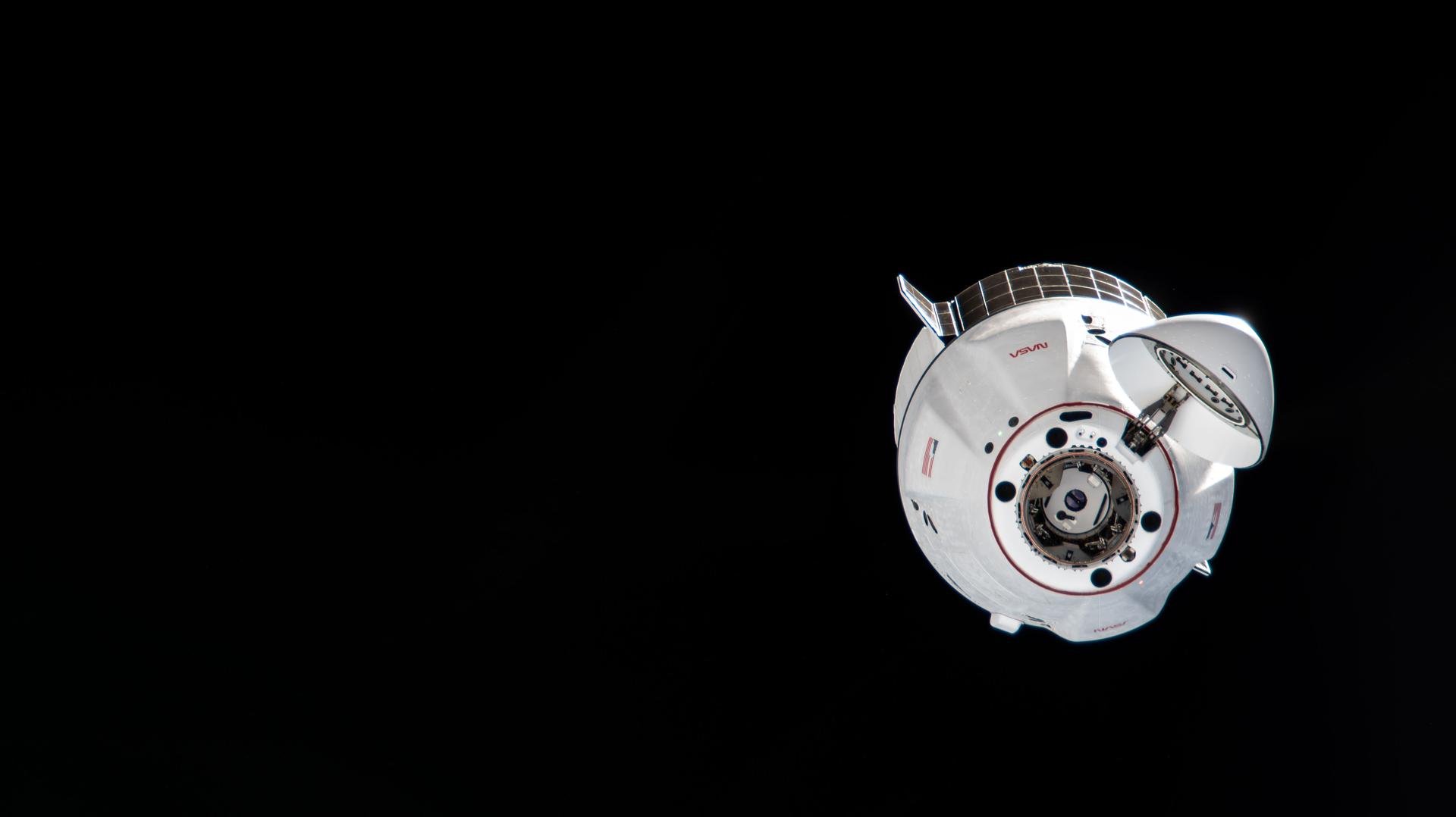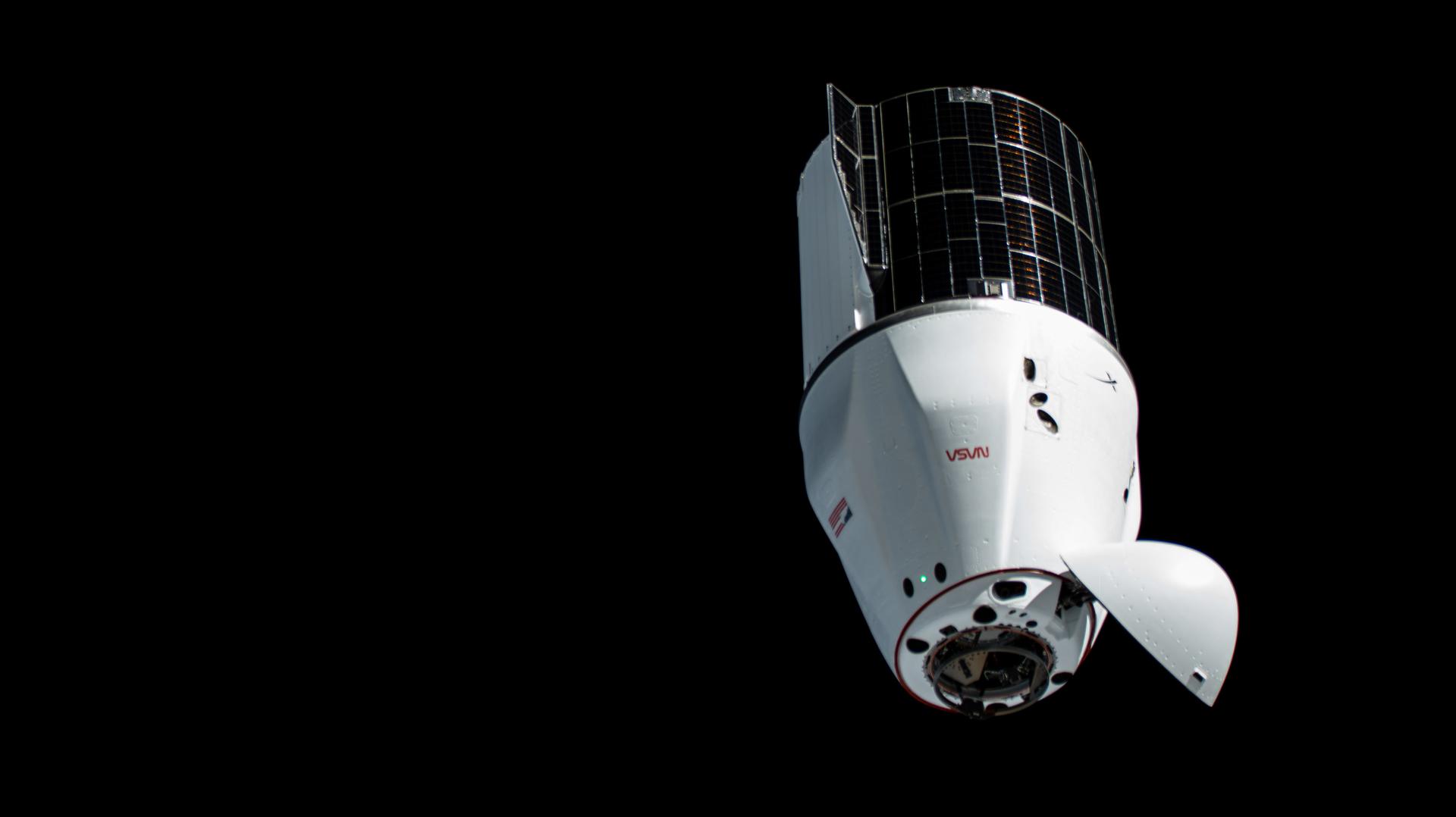Crew Packs Dragon for Thursday Departure and Keeps Up Research
The SpaceX Dragon cargo spacecraft is one day away from departing the International Space Station and the Expedition 73 crew members are finishing packing it with science and cargo. The orbital residents also continued their life science activities and lab maintenance duties on Wednesday.
Four station astronauts worked together throughout their day loading several tons of completed science experiments and station hardware inside Dragon. NASA Flight Engineers Anne McClain and Nichole Ayers kicked off their shift loading and securing a variety of cargo inside the spacecraft ahead of its departure and undocking planned for 12:05 p.m. EDT on Thursday. Toward the end of their shift, they removed portable science freezers containing research samples from station EXPRESS racks and installed them inside Dragon.
Station Commander Takuya Onishi spent the majority of his day assisting with the Dragon loading as the U.S. spacecraft nears the end of 30 days docked to the Harmony module’s space-facing port. NASA Flight Engineer Jonny Kim, who will be on duty Thursday monitoring Dragon as it departs the station, also joined in on the cargo transfers. The four crew members will be back on cargo duty early Thursday loading time sensitive, critical research samples on Dragon for the ride back to Earth. NASA+ will begin its live broadcast of Dragon’s departure at 11:45 a.m. Thursday.
Numerous space science investigations continued on Wednesday exploring space agriculture and human research aboard the orbital outpost. Ayers, at the end of her shift, wrapped up a botany study in the Destiny laboratory module exploring if genetically modified tomato plants can grow with techniques other than photosynthesis. Kim activated a series of student-designed experiments investigating how microgravity affects different disease mechanisms possibly leading to new, more advanced therapies.
Veteran Roscosmos Flight Engineer Sergey Ryzhikov completed a 24-hour session disconnecting sensors that measured his heart activity and blood pressure. Next, Flight Engineer Alexey Zubritsky attached sensors to himself and began his 24-hour heart and blood pressure monitoring session. Ryzhikov later set up Earth observation hardware to image the planet’s nighttime atmosphere in ultraviolet wavelengths. Zubritskiy also pointed a camera at Earth imaging Brazil, Italy, Mauritania across a wide range of wavelengths.
Roscosmos Flight Engineer and first-time space flyer Kirill Peskov was back inside the Nauka science module working on maintenance of the European robotic arm (ERA). Kirill checked the ERA’s computer interface, safety features, and electrical systems. Nauka and the ERA were launched aboard a Proton rocket on July 21, 2021. Nauka with the ERA attached autonomously docked a few days later to the Zvezda service module’s Earth-facing port on July 29.
Learn more about station activities by following the space station blog, @space_station and @ISS_Research on X, as well as the ISS Facebook and ISS Instagram accounts.
Get the latest from NASA delivered every week. Subscribe here: https://www.nasa.gov/subscribe
Powered by WPeMatico
Get The Details…
Mark A. Garcia








